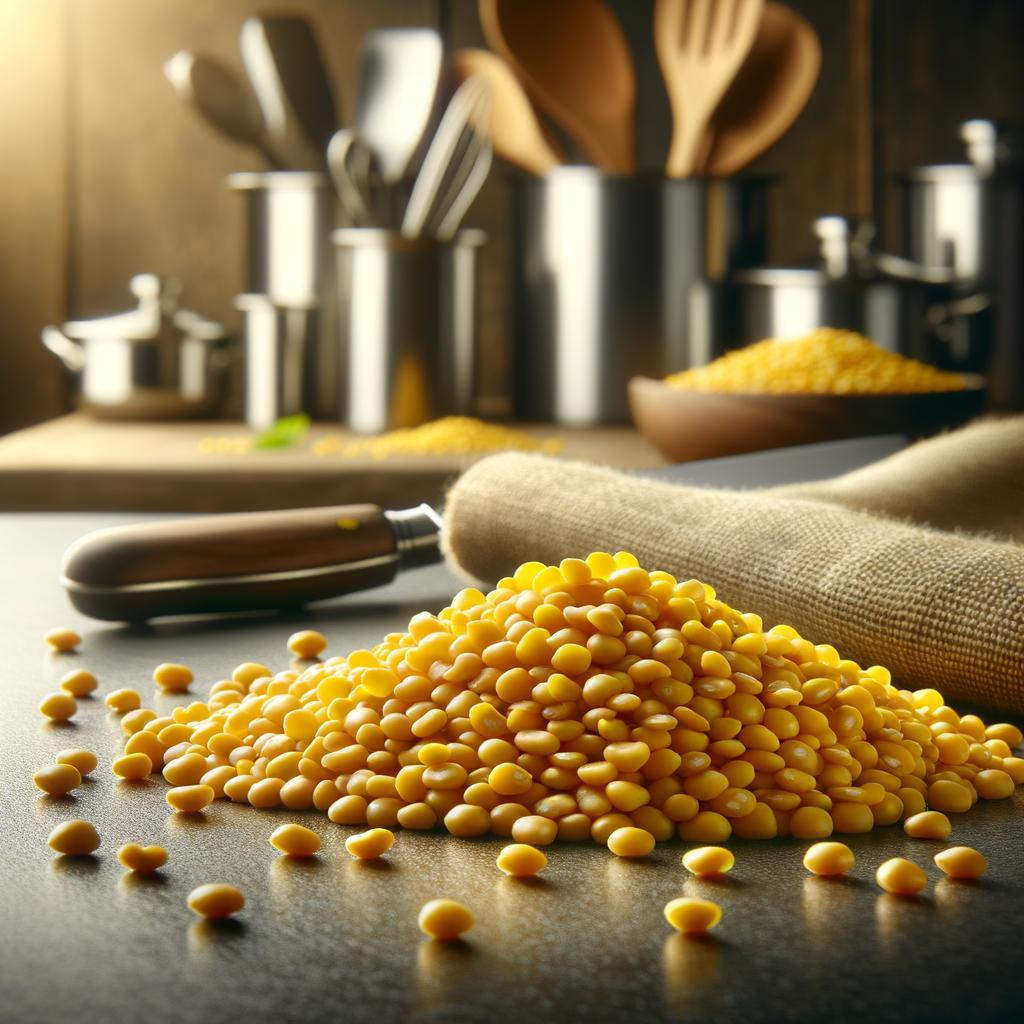Yellow Split Peas

Description
Yellow split peas, a darling of the legume family, are a sight to behold. These petite, golden-hued gems are smooth and oval-shaped, often split in half to reveal a flat inner surface. They possess a firm yet creamy texture when cooked, providing a delightful contrast that makes every bite a culinary adventure. Their flavor profile is subtly earthy and sweet, a comforting taste that wraps you in a warm, homey embrace. What sets them apart from their green counterparts is their mellow sweetness and softer texture, making them a versatile ingredient in a myriad of dishes.
Primary Uses
Yellow split peas are a pillar in many world cuisines, from the hearty soups of North America to the flavorful dals of India. They are commonly used in soups and stews, their creamy texture providing a hearty thickness that is both nutritious and satisfying. In Middle Eastern cuisine, they are often transformed into a dip, similar to hummus, but with a unique, distinct flavor. Beyond their culinary uses, yellow split peas have also been used in traditional medicine, particularly in Ayurveda, where they are valued for their high fiber and protein content.
History
The humble yellow split pea has a rich and romantic history that spans millennia. They are believed to have originated in the Middle East nearly 8,000 years ago, making them one of the world's oldest cultivated crops. These golden jewels have been found in ancient tombs in Egypt and Greece, a testament to their value and significance in early civilizations. Over the centuries, their popularity spread across continents, with each culture embracing and incorporating them into their traditional dishes. There's an old Scottish rhyme that speaks of "pease porridge hot," a testament to the legume's longstanding place in the culinary world.
Nutritional Information
Yellow split peas are a nutritional powerhouse, packed with essential nutrients. They are a rich source of plant-based protein and dietary fiber, which aids digestion and promotes a feeling of fullness. They also provide essential minerals like potassium, magnesium, and iron, as well as B vitamins. Regular consumption of these golden nuggets may support heart health and blood sugar control, thanks to their low glycemic index and high fiber content. Compared to other legumes, yellow split peas have a similar nutritional profile, but they stand out with their slightly higher protein content and lower fat levels. Their nutritional richness, combined with their delightful taste and texture, makes them a cherished ingredient in kitchens around the world.

